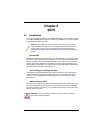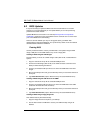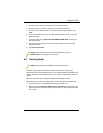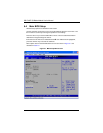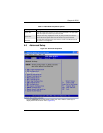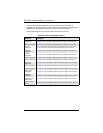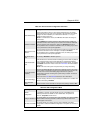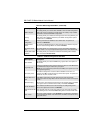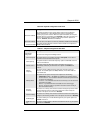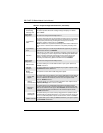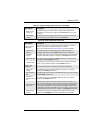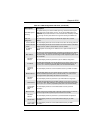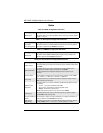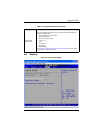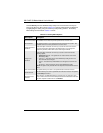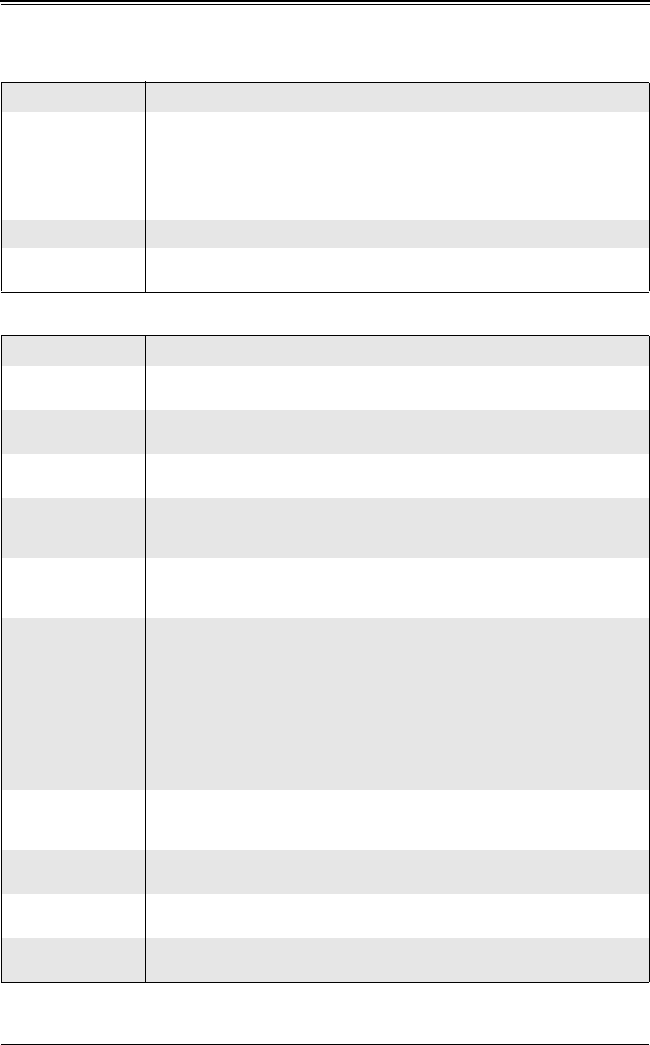
6-9
Chapter 6: BIOS
Table 6-6. SuperIO Configuration Sub-menu
Menu Option Description
Serial Port1 Address
This option specifies the base I/O port address and the Interrupt Request
address of Serial Port 1. Select Disabled to prevent the serial port from
accessing any system resources. When this option is Disabled, the serial port
physically becomes unavailable. Select 3F8/IRQ4 to allow the serial port to use
3F8 as its I/O port address and IRQ 4 for its interrupt address. Options are
D
ISABLED, 3F8/IRQ4, 3E8/IRQ4 and 2E8/IRQ3.
Serial Port2 Address Same as above, but options are DISABLED, 2F8/IRQ3, 3E8/IRQ4 and 2E8/IRQ3.
Serial Port2 Mode
This setting allows the BIOS to select the mode for Serial Port 2. Options are
Normal, IrDA and ASK IR.
Table 6-7. Chipset Configuration Sub-menu
Menu Option Description
CPU Bridge
Configuration
This sub-menu configures CPU Bridge features
QPI Links Speed
This option allows you to transition QPI links to Full-Speed or leave them in
S
LOW-MODE for the QPI data transfer speed.
QPI Frequency
This option selects the desired QPI frequency. Option include Auto, 4.800 GT,
5.866 GT and 6.400 GT.
QPI L0s and L1
This option enables the QPI power state to low power with L0s and L1
automatically selected by the mainboard. The options are Disabled and
E
NABLED.
Memory
Frequency
This feature forces a DDR3 frequency slower than what the system has
detected. The available options are Auto, DDR-800, F
ORCE DDR-1066 and
F
ORCE DDR-1333.
Memory Mode
This option sets the system memory mode. Options are the following:
• Independent (default) – All DIMMs are available to the operating system.
•C
HANNEL MIRROR – The mainboard maintains two identical copies of all data
in memory for redundancy.
•L
OCKSTEP – The mainboard uses two areas of memory to run the same set
of operations in parallel.
•S
PARING – A preset threshold of correctable errors is used to trigger
fail-over. The spare memory is put online and used as active memory in
place of the failed memory.
Demand
Scrubbing
This feature is a memory error-correction scheme whereby the processor writes
corrected data back into the memory block from where it was read by the
processor. The options are E
NABLED or Disabled.
Patrol Scrubbing
This feature is a memory error-correction scheme that works in the background
looking for and correcting resident errors. The options are E
NABLED or Disabled.
NUMA Support
This feature allows you to enable NUMA support for your system. Options are
Enabled or D
ISABLED.
DIMM CE Event
Log
This feature enables/disables a NUMA Correctable Error Event Log.The options
are E
NABLED or Disabled.



